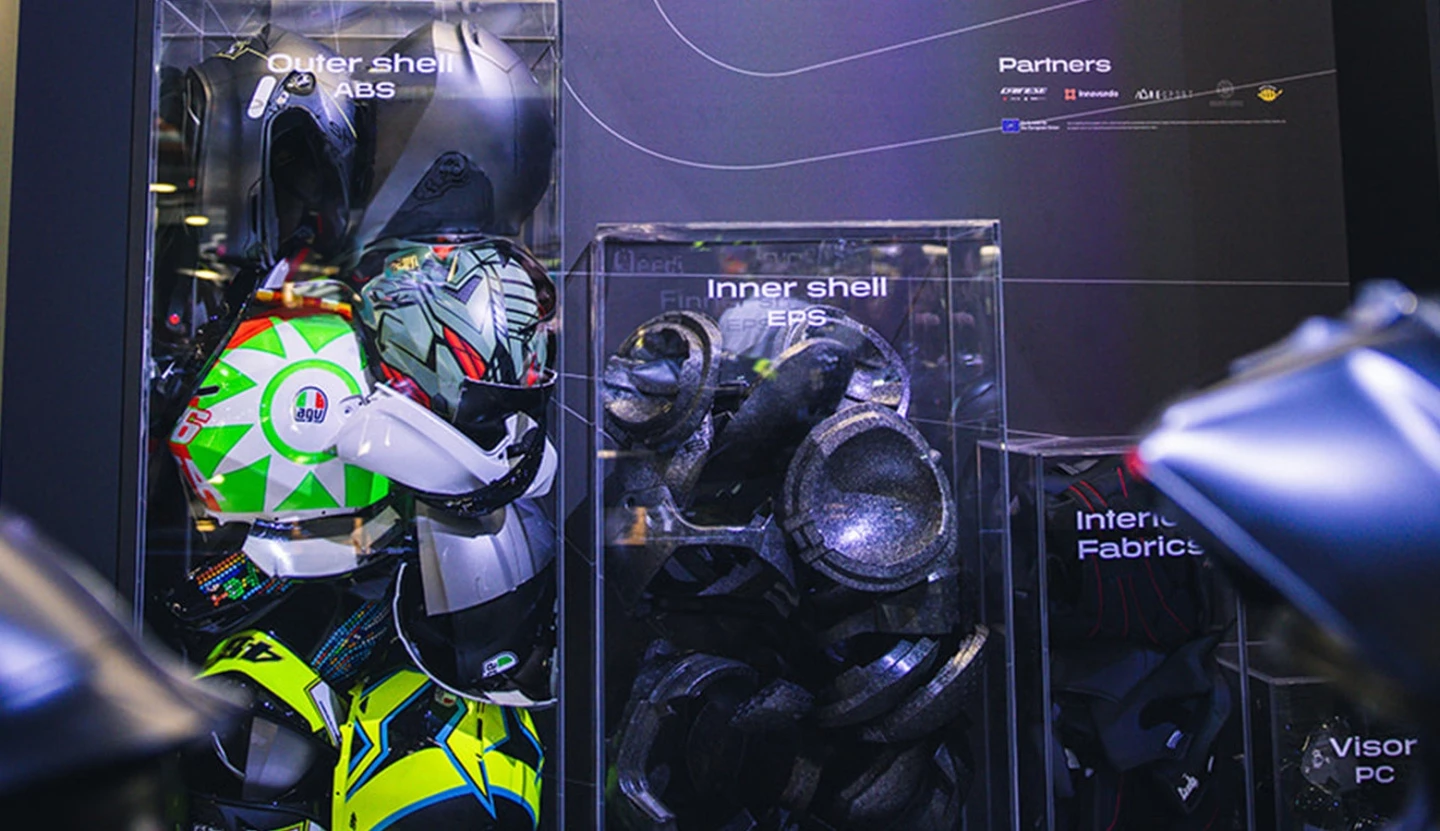Motorcycle-related waste is a serious problem. And apparently, there’s more waste from motorcycle gear than from the actual machine itself – particularly helmets. Dainese, the company that owns AGV Helmets, has thus started a ground-breaking helmet recycling strategy.
It’s called the Life Impacto project, and it aims to solve the problem of discarded helmets. The idea is to extend the helmet's overall life cycle by using selective recycling to change the linear process into a circular one.
Dainese looks at it as an industrial-scale method of recycling motorcycle lids.
Previously, discarded helmets would most likely end up at the incinerator or landfill. The objective is to rethink the way that end-of-life motorcycle equipment is handled, avoiding unnecessary waste by creating a sustainable and effective method of separating and recycling the plastics used to make helmets.

Massimo Varese, the R&D Director of the Dainese Group, stresses that safety would not be sacrificed in this process.
"Saving lives remains our goal," he says. "The helmets that are manufactured will have the same safety features and standards as those that are made with new plastics [...] It’s all about reusing materials where possible. For example, the polycarbonate that makes the visor – if this cannot be used for its original purpose, then it could be used to make new spoilers instead."
For the initiative, Dainese is presently in the process of building a new factory. The company is hoping to address two challenges through this initiative: the recycling of plastics in existing lids, and the design of new ones to make them easier to recycle in the future.
This factory will process the collected end-of-use helmets to sort out various plastics (ABS, EPS, and PC) which will be recycled into components for brand-new AGV helmets. The initial goal is to recycle 5,000 helmets.

Re-Sport, a University of Bologna spinoff company that specializes in cutting-edge technologies for recycling composite sports equipment, is one of four Italian groups that Dainese is collaborating with on the technology. Innovando, a reverse logistics company; Misitano & Stracuzzi, a supplier of bio-based solvents derived from citrus fruit waste; and the University of Bologna are the other three.
The projected results of the project are remarkable. It is anticipated that 8,157 lb (3,700 kg) of ABS, 2,328 lb (1,056 kg) of EPS, and 1,404 lb (637 kg) of PC will ultimately be retrieved from the 5,000 recycled helmets. The recycling process will also reduce overall water use by 50%, and power usage and CO2 emissions by 60%.

Helmets only last so long, even if they aren't harmed by falls. Usual manufacturers' guidelines state replacing them every five to seven years, which ends up generating a significant amount of waste. Life Impacto could very well mark the beginning of a major shift in the helmet market, by encouraging more environmentally friendly production methods without sacrificing motorcycle riders' safety.
After all, why should the onus for environmental impact only lie with EVs? The gear that we use to ride them is a brilliant opportunity to make a change as well.
Source: Dainese






